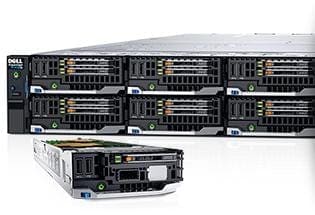Dell PowerEdge has been a main competitor in the server compute market for some years. Support for VMware’s ESXi Hypervisor is forever strong and the HCL always updated. Support for the latest generation CPUs is always included with new releases and the online customization tool is a real selling point where you can select exactly what you want in your build and generate a list price without even having to login. (See here http://www.dell.com/us/business/p/enterprise-products?stp_redir=false&~ck=mn)
One thing that a friend showed me some time ago was how the Dell PowerEdge servers are named. Take for example the following model: Dell PowerEdge R630
The first letter of R630 is the server type (Rack, Modular Tower
- Rack is 19″ rack-mountable
- Modular is a traditional blade server
- Tower is a standard free standing server
The first digit of R630 indicates the number of CPU sockets that the server supports
- 1-3 is a 1 socket server
- 4-7 is a 2 socket server
- 8 is a 2 or 4 socket server
- 9 is a 4 socket server
The second digit of R630 refers to the generation of the server
- 0 = 10th Gen (2008)
- 1= 11th Gen (2009-10)
- 2 = 12th Gen (2012)
- 3 – 13th Gen (2014-16)
The last digit of R630 is the CPU vendor
- 0 = Intel
- 5 = AMD
Therefore a Dell PowerEdge R630 server is a Rack mountable 2 socket, 13th Generation, Intel server and an R640 will probably be launched late 2016-17
Simple when you know how!








